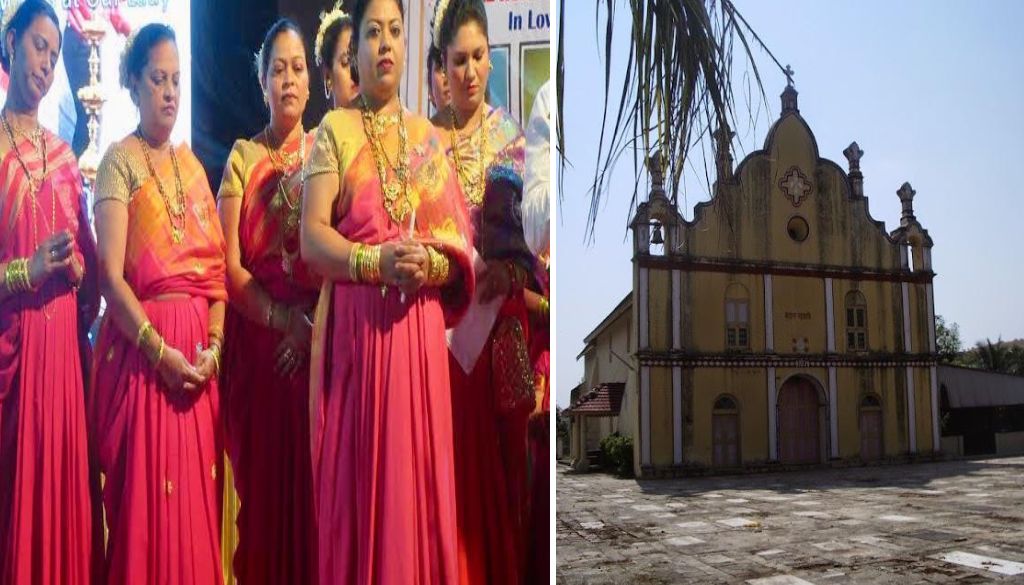The East Indians Christians of Mumbai: An Ethno-Cultural Legacy

Reported by Disha Tandon
Mumbai, 27th December 2024: Beneath its fast-paced modernity of Mumbai lies the story of the East Indians-an ethno-religious Christian community that is arguably among the city’s original inhabitants. Tracing their roots back centuries, they have seen Bombay evolve from a cluster of marshy islands to the thriving metropolis it is today.
Origins and Historical Legacy
The term “East Indians” sounds geographically misplaced, but its roots go a long way in colonial history. The origin of this community traces its roots to the spreading of Christianity in India that many believe even predates the coming of European missionaries. While the Apostle Bartholomew is said to have introduced Christianity as early as the 1st century along the Konkan coast, a more common narrative places the origin of East Indians during the 16th century under Portuguese rule. When Bombay was given as a dowry to the British Crown with Catherine of Braganza at her marriage with King Charles II in 1661, the local Christian population began to become integrated with the British East India Company.
By Queen Victoria’s golden jubilee in 1887, the Christians of Bombay made themselves different from incoming Goan Christians by adopting the nomenclature “East Indians,” emphasizing their connection to the Company and their claim as being the original Christians of that region.
Cultural Landmarks: Churches and Grottoes
The East Indian villages of Mumbai, Raigad, and Thane have churches, grottos, and architectural relics from bygone eras. A good example is the Our Lady of Bethlehem Church in Dongri, built in 1613. Its simple façade and gold-plated statue of Mother Mary with Infant Jesus capture the community’s spiritual devotion. More recent churches, such as Velankanni Church in Uttan, blend modern aesthetics with traditional values.
Grottoes are small caves or shrines that are yet another hall mark of East Indian Christian culture. They are present in the premises of churches, in private buildings and even at rocky outcrops of beaches. They are built to house statues of Christ, Mary, Joseph and other saints. The places are tranquil and bring about memories of faith and survival, amidst the serene vistas of the coastal belt of Mumbai.
Fishing: A Lifeline for Generations
Fishing has been central to the East Indian way of life. Northern coastal villages like Dongri, Gorai, and Uttan remain abuzz with fishing activities.
Early mornings see trawlers bringing in fresh catches, which are packed in ice for transport or sun-dried to produce Bombay Duck, a local delicacy with a surprising etymology. The name “Bombay Duck” is etymologically traced to the Bengali word dak (mail), which describes how dried fish was transported by mail trains to Kolkata. The large bamboo scaffolding structures that dry fish are an iconic sight, telling much about the community’s connection to the sea.
Forts and Maritime Heritage
The East Indian regions also house remnants of Portuguese fortifications, such as Dongri Fort near Vasai Creek. This 16th-century fort was strategically constructed on an elevated terrain that gave the sweeping views of the Arabian Sea and the skyline of Mumbai. Although most of it lies in ruins now, the remains of the bastions and stone huts still speak of the importance of the place. The vantage points from the fort were critical in monitoring seafaring activities and preventing invasions.
Near it, Vasai Fort (Bassein Fort) is much bigger and famous, and yet another testament to the maritime power of the Portuguese. It was a bustling port and military base at its time. The expansive walls, ornate churches, and gateways of the fort tell the story of a blend of European styles with local influences. Now, it is a heritage site that stands as testimony to centuries of maritime trade and cultural exchange.
Identity in the Modern Age
With the relentless urbanization of Mumbai, the East Indian community struggles to maintain its unique cultural identity. Inter-caste and inter-racial marriages, migration, and the erasure of traditional practices have led to a feeling of loss. The community, once flourishing in the heart of Bombay, is now dwindling in numbers, with just over half a million spread across the globe.
To add to the complexity, there are misconceptions about their name. Outside India, “East Indian” is often mistakenly understood to refer to people from eastern India or even Native Americans. This lack of recognition stings a community that has contributed so much to Mumbai’s history and culture.
Preserving Heritage: Food, Music, and Traditions
East Indian culture is a tapestry of Portuguese and Indian influences. Traditional dresses like lugras (nine-yard sarees) and parasols are symbols of their cultural heritage. The community celebrates their seafaring past and festive spirit through the music that is often folk-instrumental.
Food, too, is closely related to the cultural moorings of East Indian culture. Most of the dishes such as vindaloo, sorpotel, and kuddi curry represent a mix of some Portuguese flavor and some original local ingredient. Delicacies for seasonal delicacy and seafood specialties have largely contributed to the making of community affairs and celebrations.
For the East Indians of Mumbai, the challenge is to strike a balance between modernity and tradition. As global citizens, they embrace change but remain rooted in their heritage. Efforts to document and share their history, cuisine, and customs are crucial to ensuring their legacy passes from one generation to another.
In a city that rushes toward progress, giving space for cultures to evolve, East Indian Christians stand as a testament to the rich cultural mosaic of Mumbai. They are not only the inhabitants of Mumbai but also the keepers of its soul. The community continues to thrive, fostering a deep connection with its roots while embracing changes.








